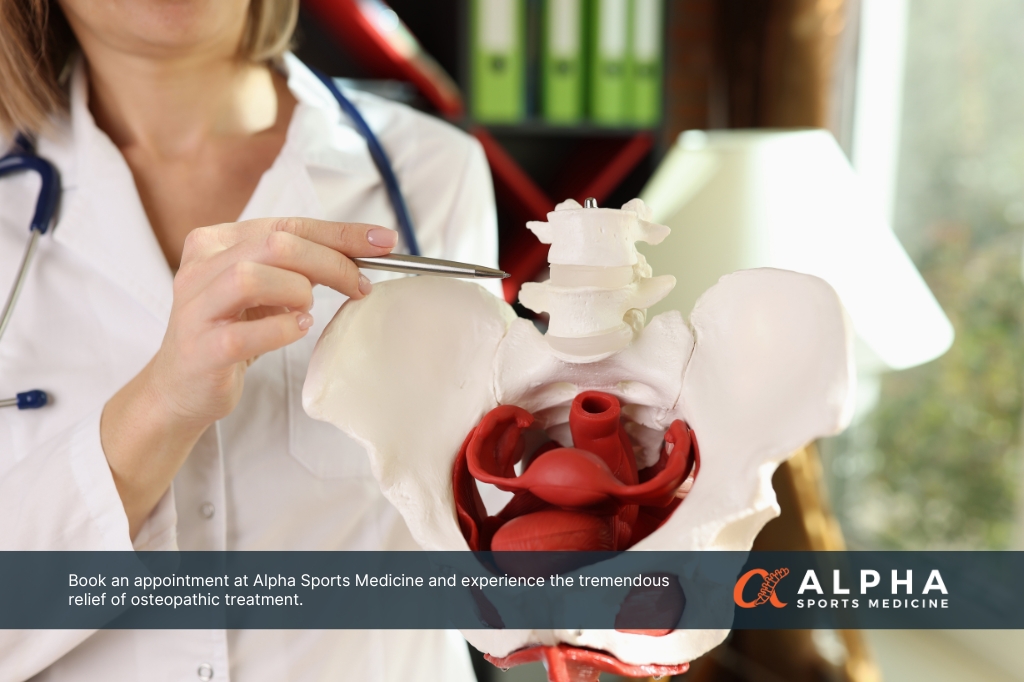Disc injuries can be debilitating and affect your daily activities. Have you tried different treatments but still struggle with pain and discomfort? Osteopathy may be the answer you’ve been looking for.
Disc injuries occur when a spinal disc’s soft, gel-like centre pushes through a weak spot in the outer layer, putting pressure on nearby nerves. This can cause intense pain, numbness, and weakness in the affected area. Traditional treatments for disc injuries often involve medication, physiotherapy, or surgery, but these options may not always provide long-term relief.
Osteopathy is a form of manual therapy that focuses on the body’s musculoskeletal system and how it affects overall health. It is a holistic approach that addresses the root cause of the problem rather than just treating symptoms. If you’re looking for a natural and effective way to heal your disc injury, osteopathy may be the solution.
What is a disc injury?
Disc injuries can result in significant back discomfort. This is sometimes called a prolapsed disc, bulging disc, or slipped disc (the disc does not slip. It just ruptures or herniates).
This occurs when the soft viscous fluid bulges beyond the damaged outer rings of the disc.
Another type of injury occurs when only the outer ring of the disc (annulus) tears, an annular tear, since little or no nuclear disc bulges through the tear.
The disc can also irritate the surrounding tissue, including the spinal nerves, at or below the level of the spinal segment where the disc has been injured chemically or mechanically through pressure.
Types of disc injuries
There are many terminologies based on the various disc injuries that might occur.
- Disc bulge
A portion of the disc material protrudes out and displaces the disc’s outer fibres, encompassing more than 25% of the disc’s circumference.
- Disc herniation
This is when the disc material is displaced beyond the typical bounds of the disc but less than 25% of the circumference.
- Disc desiccation
Refers to the disc’s dehydration or degenerative alterations.
- Disc sequestration
It is extruded disc material that has no continuity with the disc from which it has protruded, separating the bulged disc material from the disc.
Common causes of a disc injury
Chronic Injuries
Because of their position inside the spine and the loads exerted on it, some discs are more prone to injury from regular wear and tear from daily activities. They might shrink in size over time when they dehydrate or deteriorate. As a result, you may have some pain or stiffness.
Acute Injuries
A more acute injury is usually the result of an accumulation of strain and rapid movement, which can cause acute pain, stiffness, and muscular spasms. This may necessitate a multi-modal approach to pain management.
Common symptoms of a disc injury
- The discomfort may appear days after nothing or a slight strain such as bending, twisting, or lifting.
- Pain may be sporadic at first and relieved by changing positions. Pain is frequently aggravated by sitting, straining, coughing, and sneezing.
- Pain can be dull, aching, or knife-like, and it can be felt centrally or on one side, typically in the lower back or down the leg.
- Neurological symptoms may include paresthesia, numbness, leg cramps, or weakness.
- Previous “episodes” may have occurred in the patient.
- Leg discomfort may occur due to back pain, usually on one side.
- The pain usually worsens and can interfere with sleep.
- Motor nerves are occasionally impacted as well, which can result in loss of strength, muscle weakening and wasting, and even foot drop as the leg muscles weaken.
Osteopathic treatment for disc injuries
Initial osteopathic treatment aims to reduce pain and mobilise or manipulate the spine above the site of injury to alleviate mechanical stress on the affected area.
We remove mechanical load away from the afflicted area by ensuring that the entire spine operates properly as a unit and that the range of motion of any restricted spinal joints further up the spine is improved.
Any pelvic or spinal torsion can be treated to improve symmetry and paraspinal muscle balance. Along with improved general spine biomechanics, the sympathetic chain is down-regulated, controlling pain and diminishing pain perception.
In addition, transcutaneous electrical nerve stimulation (TENS) can be utilised.
An MRI scan can provide a precise diagnosis by displaying the severity of a disc injury. Typically, most disc injuries will fully heal within six to eight weeks.
Osteopathy can alleviate pain, facilitate tissue healing, and expedite healing.

Final thoughts on healing a disc injury with osteopathy
It is important to remember that even a severe disc injury can be managed without surgery with the right combination of osteopathy and exercise.
Osteopathy is an effective treatment for managing disc injuries, focusing on finding and addressing the underlying causes.
It is also essential to understand that rehabilitation should not be rushed. Take time to allow your body to heal and recover.
Book an appointment at Alpha Sports Medicine and experience the tremendous relief of osteopathic treatment.
Author
-

Dr. Ashton Wilson began her studies with a three year Bachelor of Biomedical Science, where she majored in Anatomy and Physiology. She then switched to a more hands on approach, where she completed a three year Bachelor of Clinical Science and a two year Masters of Osteopathy. Ashton has since completed further education and is a qualified Strength and Conditioning Coach as well as a Kinetic Link Trainer.
View all posts







